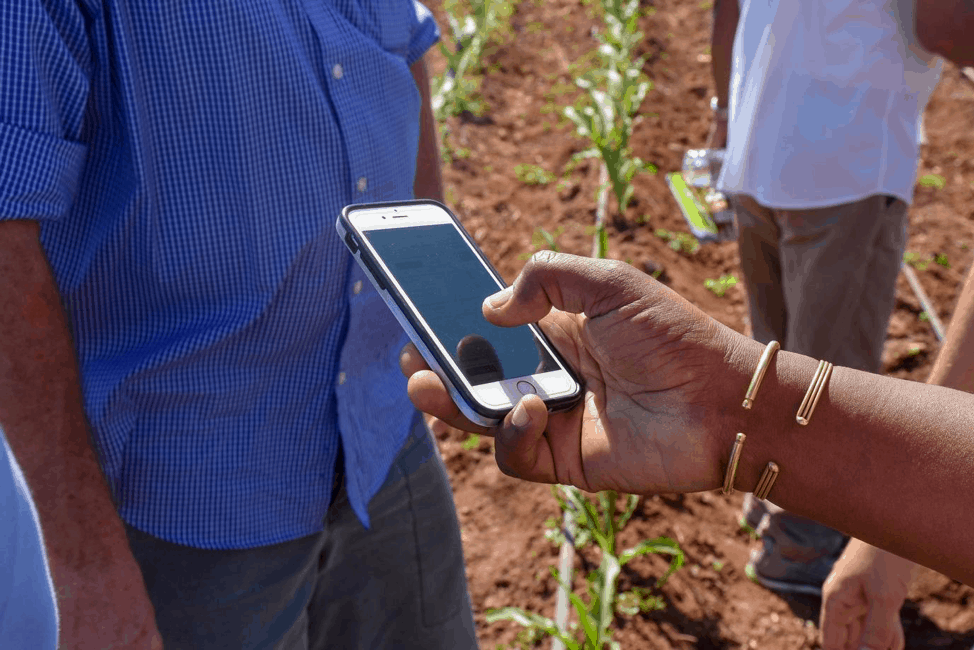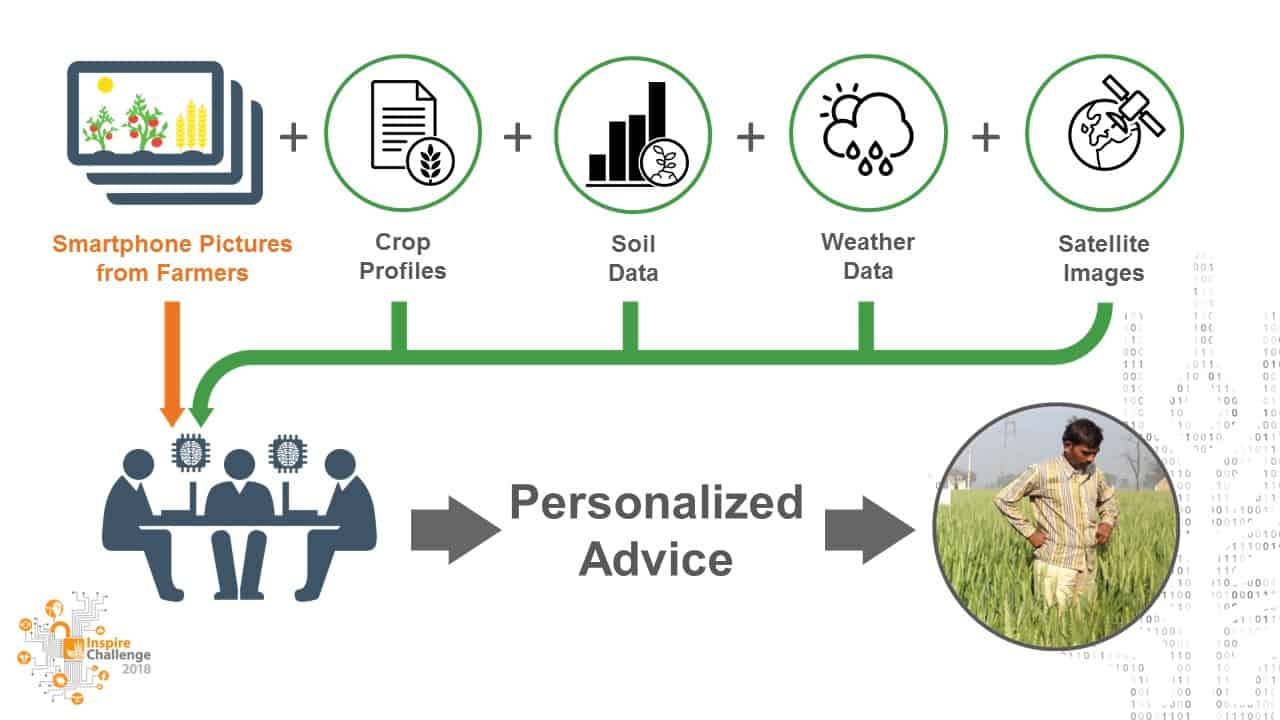Seeing really is believing: farmers’ photos revolutionize insurance and advisory services
When it comes to assessing insurance claims on damaged crops, seeing is believing. Which could be key to mitigating negative effects for smallholder farmers as a result of climate change.
As climate change continues to bring negative effects for smallholder farmers, the demand for agricultural risk management solutions is increasing. Insurance for severe weather events, pests and diseases is not always available or affordable for smallholders.
In areas where these services are available, they have been limited due to high monitoring and verification costs, and imperfect correlations between actual losses and insurance payouts. Additionally, if not carefully designed, insurance products face the risk of acting as a substitute for resilience-enhancing technologies that would alleviate the potential risks.
Winners of last year’s Inspire Challenge scale-up project, Seeing is Believing, have taken huge strides towards making big data, crop advisory services, and insurance work for smallholder farmers with their picture-based insurance approach.
The Seeing is Believing team was first awarded the Inspire Challenge grant in 2017, an initiative by the CGIAR Platform for Big Data to encourage innovative big data approaches to advance agricultural research and development across the sector. The team was awarded an additional grant of 250,000 USD in 2018 to scale up their project.
The Seeing is Believing concept was initially developed by researchers from the International Food Policy Research Institute (IFPRI) and HDFC Ergo General Insurance, an Indian insurance provider, with support from the CGIAR research programs for Policies, Institutions and Markets (PIM), Climate Change, Agriculture and Food Security (CCAFS), the International Initiative for Impact Evaluation (3ie) and the UK Natural Environmental Research Council (NERC). The team developed an app, WheatCam, which uses smartphone cameras to monitor crop health using an ‘eyes on the ground’ approach.
Photo: Jerome Bossuet/CIMMYT
“The 2017 Inspire Challenge allowed us to team up with CABI, to test whether the provision of advisories around risk management – both weather risk and also pests/diseases – can help insurance providers by improving farmers’ resilience from these risks,” says Berber Kramer, lead researcher from IFPRI.
Using the app, farmers photograph an insured plot from the same angle multiple times a week. Their geotagged, time-stamped images are uploaded through the app to be analyzed.
The analysis takes into consideration visual cues to diagnose crop health, like crop greenness.
“These new technologies allow us to move from weather index-based insurance to insurance products based on remote sensing of smartphone pictures, which improve the correlation between insurance payouts and the damage that farmers experience on the ground” explains Kramer.
This, however, comes with a caveat.
“We are moving from an approach in which payouts don’t depend on farmer efforts to mitigate risk, to a system in which payouts depend on whether farmers invest themselves in risk prevention. This needs to be considered in the design of such insurance products.” Said Kramer.
Along with the images, regional pest monitoring and weather data are therefore used to create a personalized, real-time advisory service for the insured plot. This gives farmers the opportunity to mitigate the risks and make changes to improve their crop health – potentially reducing the number of insurance payouts.
“Insurance payouts are then linked to management practices, and if insurance providers can promote the adoption of risk preventive measures, they could potentially reduce the insurance premiums,” Kramer adds.
Results from initial trials in India found that the advisory service became more effective when bundled with insurance services – farmers’ engagement increased when the advisory was associated with their insurance policy, and farmers’ willingness to pay for the bundled advisory-insurance package was higher than when the two services were offered separately. These synergies between insurance and advisory services could encourage farmers to adopt more climate-smart resilience technologies.
In 2019, with the support of the Inspire Challenge, the project will scale-up its efforts. Part of this plan will be to introduce an automatic analysis service to process data at a larger scale. Additionally, in the state of Tamil Nadu, the project plans to engage existing services such as Plant Doctors and Plant Clinics set up by the Centre for Agriculture and Bioscience International (CABI) to make integrated pest management services more comprehensive.
There is also the potential to integrate picture-based insurance and advisory into credit, providing information about farmers’ creditworthiness and reducing the risk of default; and into the national crop insurance scheme, to improve farmer engagement and encourage the adoption of recommended practices, which could help farmers manage risk and lower expected insurance payouts. As a result, this may help to reduce insurance premiums.
Seeing is Believing hopes to tackle important development objectives such as the ability of farmers to mitigate risk from climate change and improve their household food security.
With the Inspire Challenge Scale-Up grant, the project can facilitate these aspirations and work with insurance providers to look closer; through the farmers’ eyes.
Over the next eight weeks, we will be featuring each of the winners from the 2018 Inspire Challenge. Follow us on Facebook, LinkedIn, Instagram and Twitter to keep up to date. Join the conversation by using #InspireChallenge.
January 25, 2019
Marianne McDade
Communications Coordinator
CGIAR Platform for Big Data in Agriculture
Cali Colombia
Latest news






